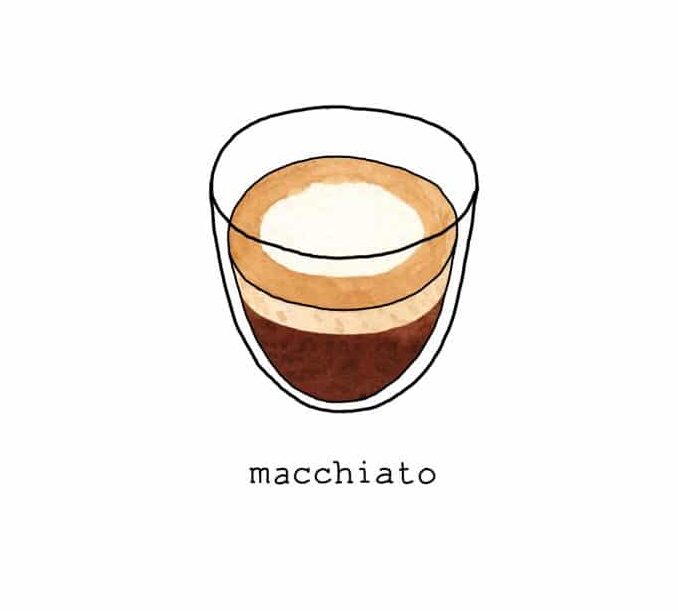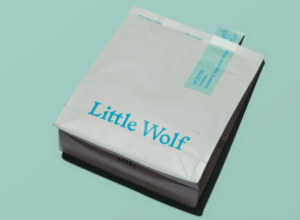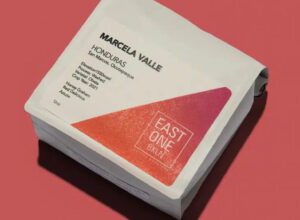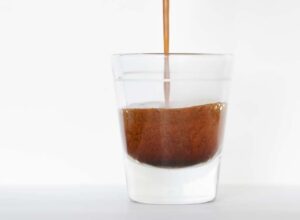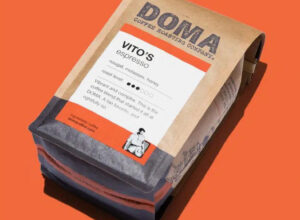Origins, drink profiles and recipes you can make with your home espresso machine.
Words by Malia Noll, Illustrations by Johanna Kindvall
This fantastic article was originally published on La Marzocco’s blog. All credit goes to La Marzocco.
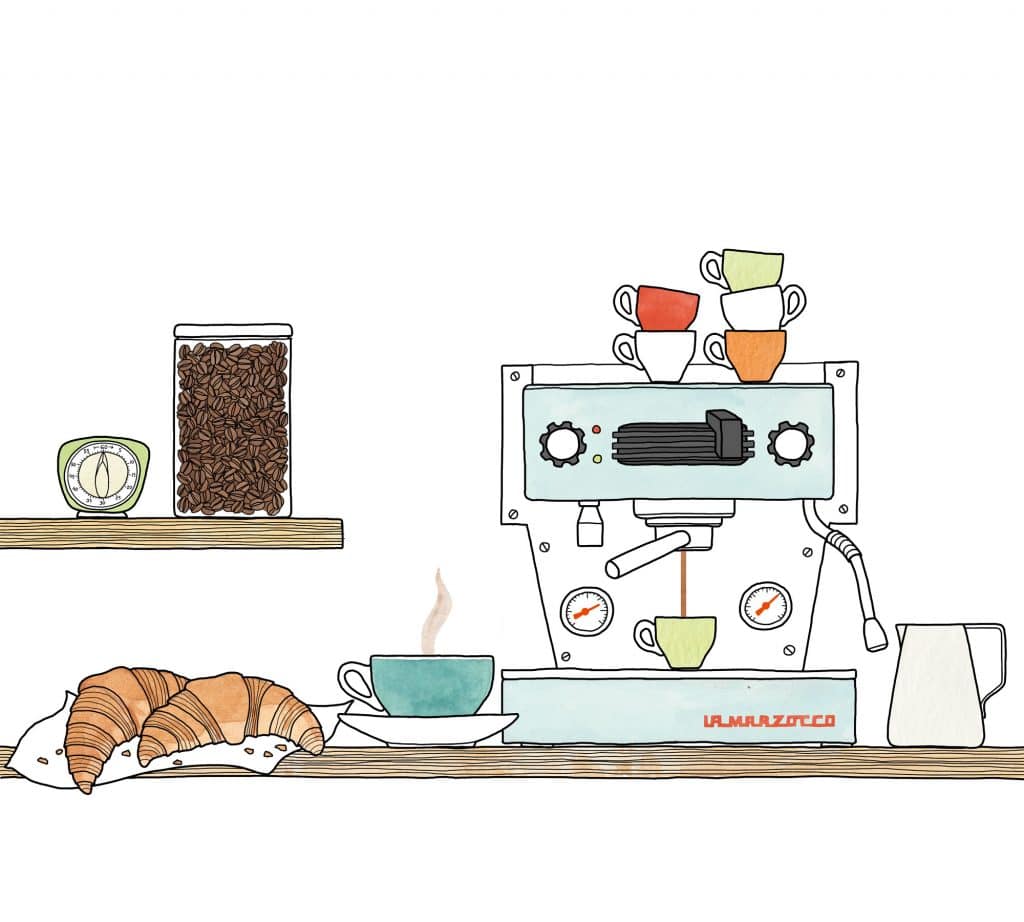
While there is no doubt that coffee enthusiasts are into espresso and the drinks it brings to life, the knowledge of drink differentiation lacks for many as they stick to their regular brew. With long lists of drinks and origins outside of the English language, knowledge beyond that of the average person becomes imperative for a well-rounded coffee experience. And while many drinks appear visually unique, such that a cappuccino is served in a smaller cup than a latte, or that espresso is served in a demitasse with no milk at all, what about each drink’s foundation—and essence—is different?
Below, we’ve put together a list of some of the most basic and popular espresso drinks to make at home. We’ve also sprinkled some history, flavor profiles, and recipes to commit to memory. Next time you wander into your neighborhood cafe or aim to craft an array of drinks at home, you’ll know the basics that—as it turns out—are not so basic after all.
Espresso
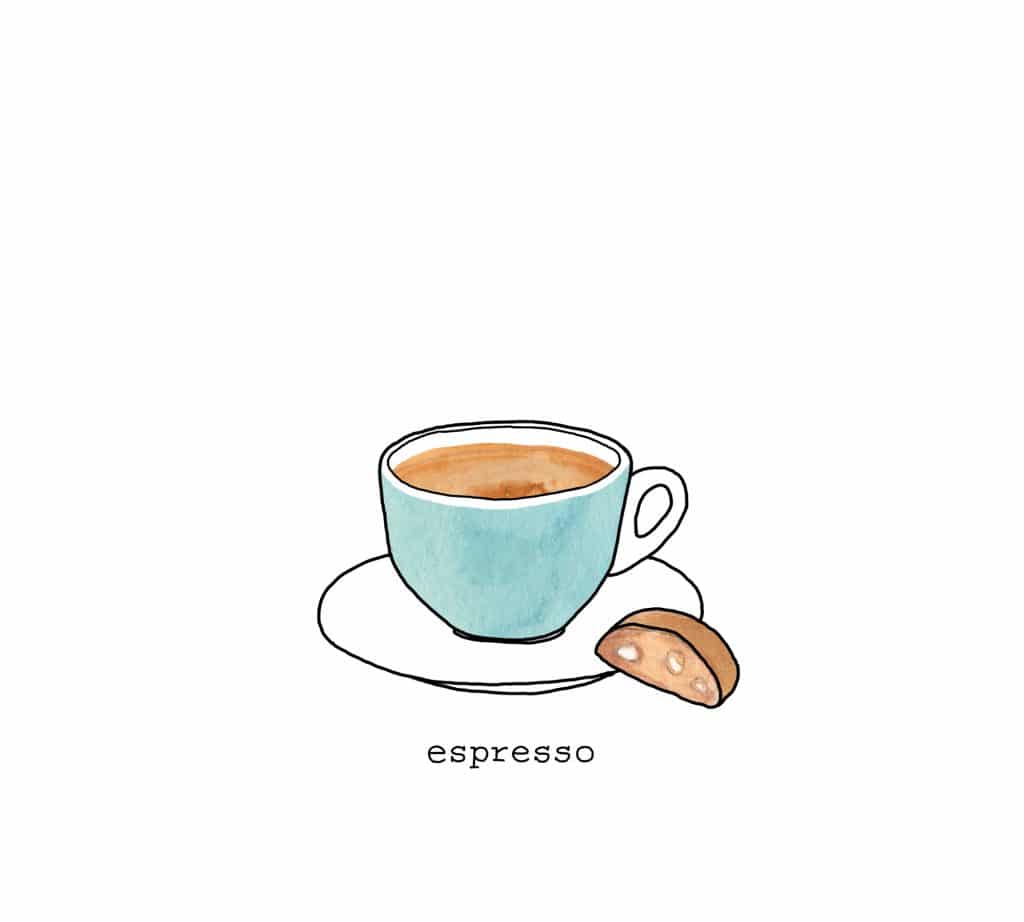
As the main ingredient for every drink listed below, let’s start by defining espresso. First and foremost, Espresso is a coffee brewing method, and it’s a way of making coffee where a small amount of near-boiling water is forced through the finely ground coffee under pressure.
Coffee is finely ground into a portafilter basket in preparation for brewing, tamped down into a flat “puck,” and secured into the espresso machine. Once the machine is engaged, it delivers water at an extremely stable temperature using a mechanical pump. The space above the flat espresso puck fills with water, and the espresso machine applies 9 bars of pressure to force water through the coffee.
At its core, a perfectly balanced shot of espresso is meant to sip alone. The taste? Strong, of course—the 1:2 ratio of coffee to water is significantly less diluted than a standard cup of filter coffee (closer to a 1:15 ratio). Besides being strong, a shot of espresso should have a complex and balanced flavor profile beneath that glossy crema on the surface.
However, the shot has been brewed to perfection when espresso is subtly sweet, and the taste lingers—a balance of acidity, sweetness, and bitterness.
The (General) Recipe: Grind 18 grams of finely ground coffee in your portafilter to pull a double shot. Aim for about 28-36 grams of espresso in about 25-30 seconds.
Macchiato
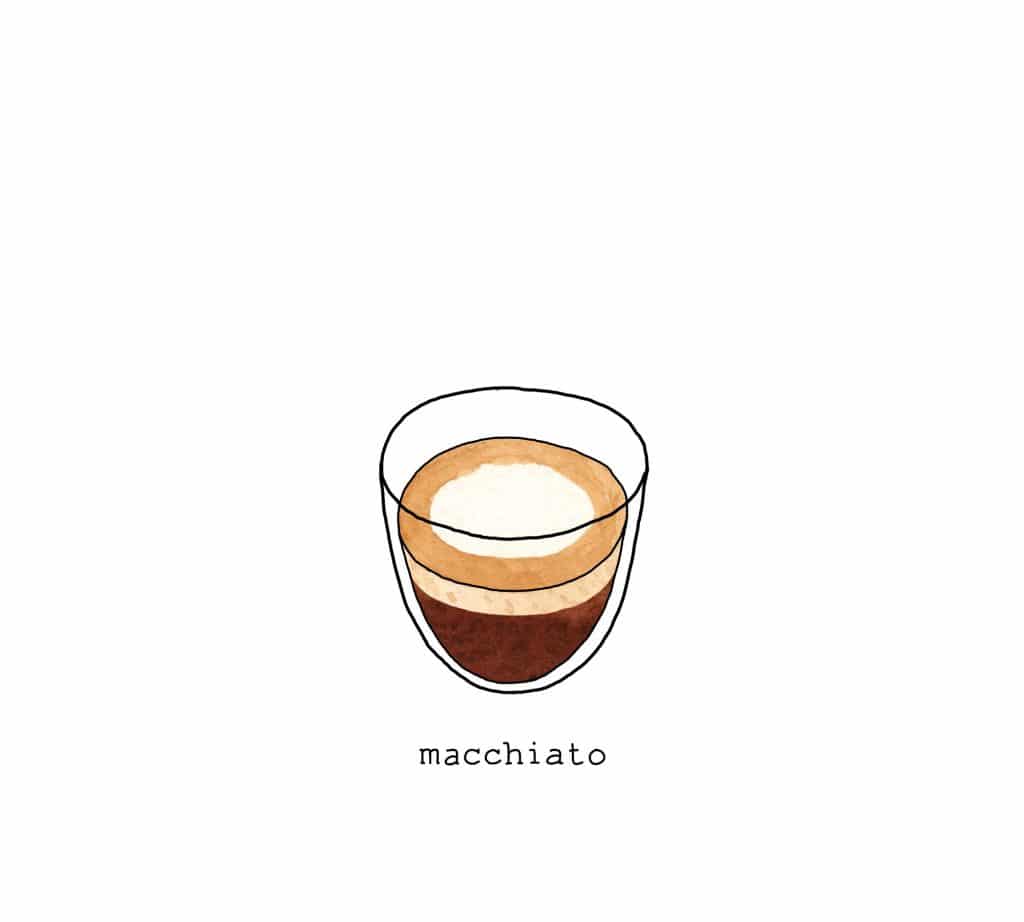
A relatively inconsistent drink depending on the cafe, the Italian macchiato is espresso that’s been dolloped with frothed milk. Translated from Italian, macchiato literally means “spotted,” a vague adjective that attests to the drink’s inconsistency across cafes. In Italy, you can expect a shot of espresso with a simple foam on top, which melts into the drink to sweeten and soften the experience slightly. However, modern coffee shops will steam and add milk much the same way as a cappuccino or latte, filling the vessel with steamed milk and microfoam. Macchiatos are typically served in a small cup, and it’s not uncommon to see them served in an espresso demitasse.
The Recipe: Pull a shot of espresso into a demitasse, and fill to the top with steamed milk (the amount of milk is up to interpretation, but it’s generally equal to the amount of espresso used or slightly less). If you’re aiming for a traditional macchiato, add just a small dollop of microfoam to the top of your espresso.
Cortado
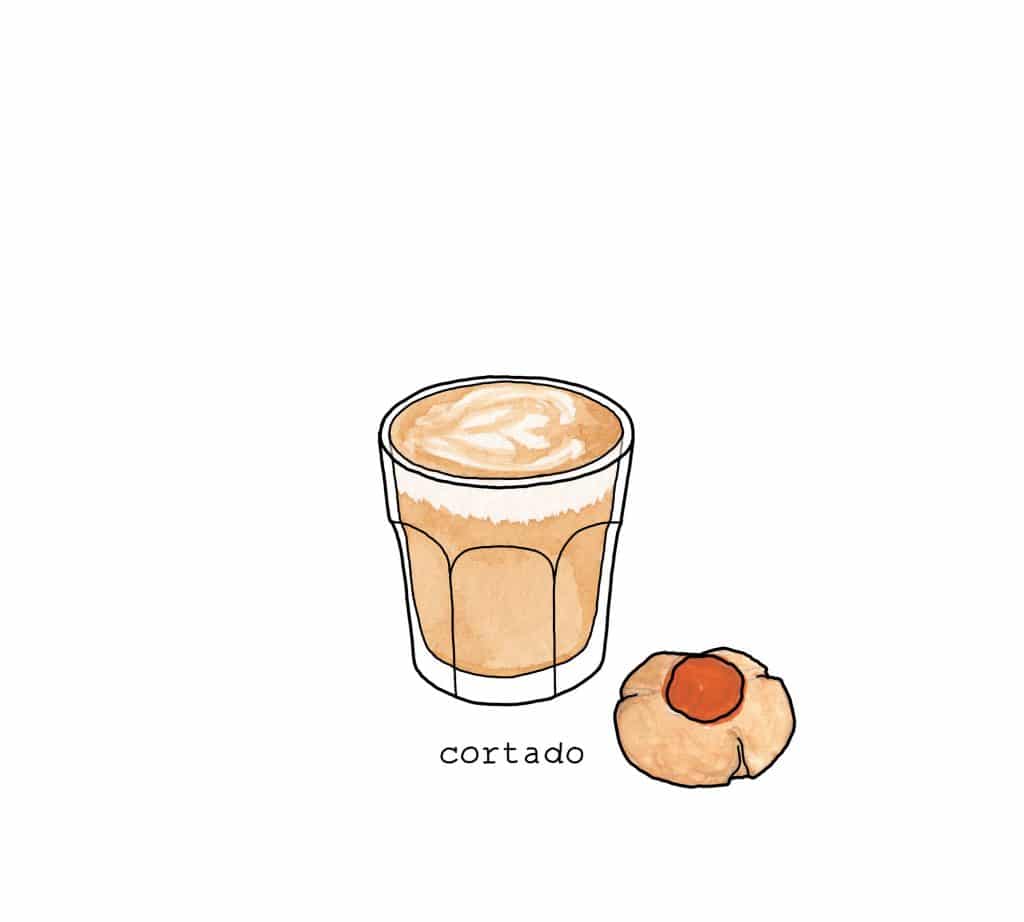
Bearing Spanish roots, the cortado has recently surged in popularity— especially in many of America’s most technical cafes. As a simple visual reminder, cortados are served in 4.5 oz clear or glossed glasses—referred to as “Gibraltar” glasses. The drink’s recipe is simple: equal parts espresso and milk. This perfect harmony creates a canvas for strong flavor notes of the espresso to shine through while balanced just so with the milk.
The Recipe: Pull a double shot of espresso (around 2 ounces of liquid). Steam 2 ounces of milk between 130-140 °F and combine. After steaming, the milk should be the consistency of wet paint.
Cappuccino
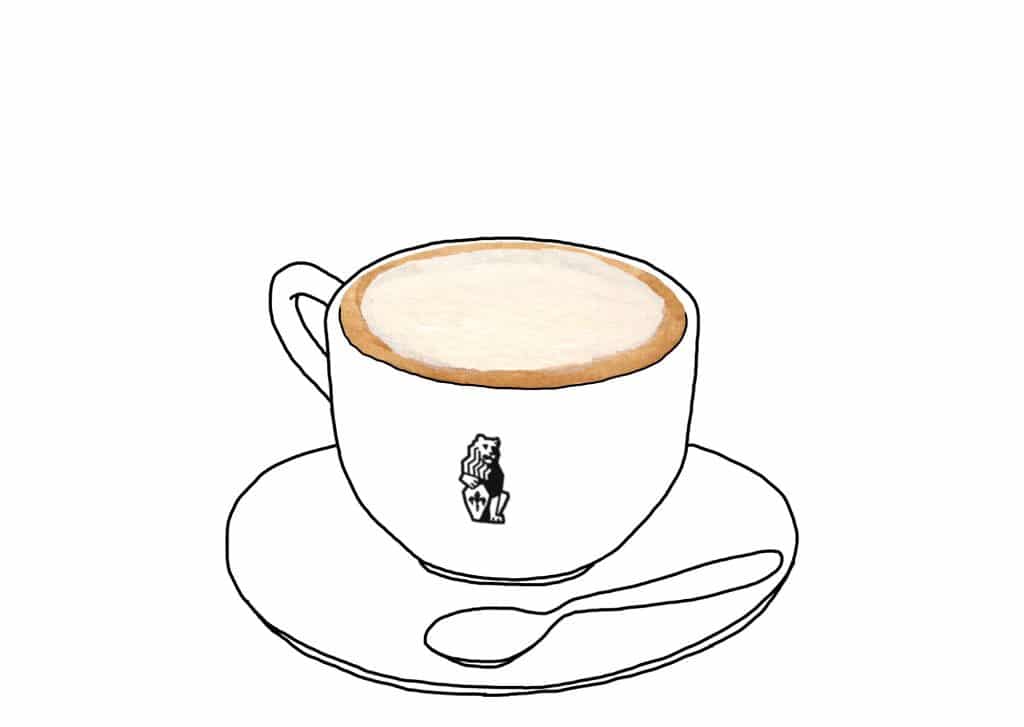
Italian cappuccinos abide by the rule of thirds: ⅓ espresso, ⅓ milk, and ⅓ foam. While many follow that traditional definition, cappuccinos at modern specialty shops have more to do with the ratio of milk to espresso (typically 1:4) and less to do with foam. If you order a cappuccino in a cafe, you’ll likely be handed a 6-ounce espresso, and milk drink with very little foam made much the same way as a latte.
The Recipe: (Classic Italian) Pull a double shot of espresso. Steam 4 ounces of milk, making sure the volume of milk doubles, creating the top layer of microfoam. When combined, the foam layer on top should make up about ⅓ of the volume of the drink.
(Modern) Pull a double shot of espresso. Steam 4 ounces of milk between 140-150 °F, making sure the volume of milk doubles, creating the top layer of microfoam. When combined, the foam layer on top should make up about ⅓ of the volume of the drink.
Latte
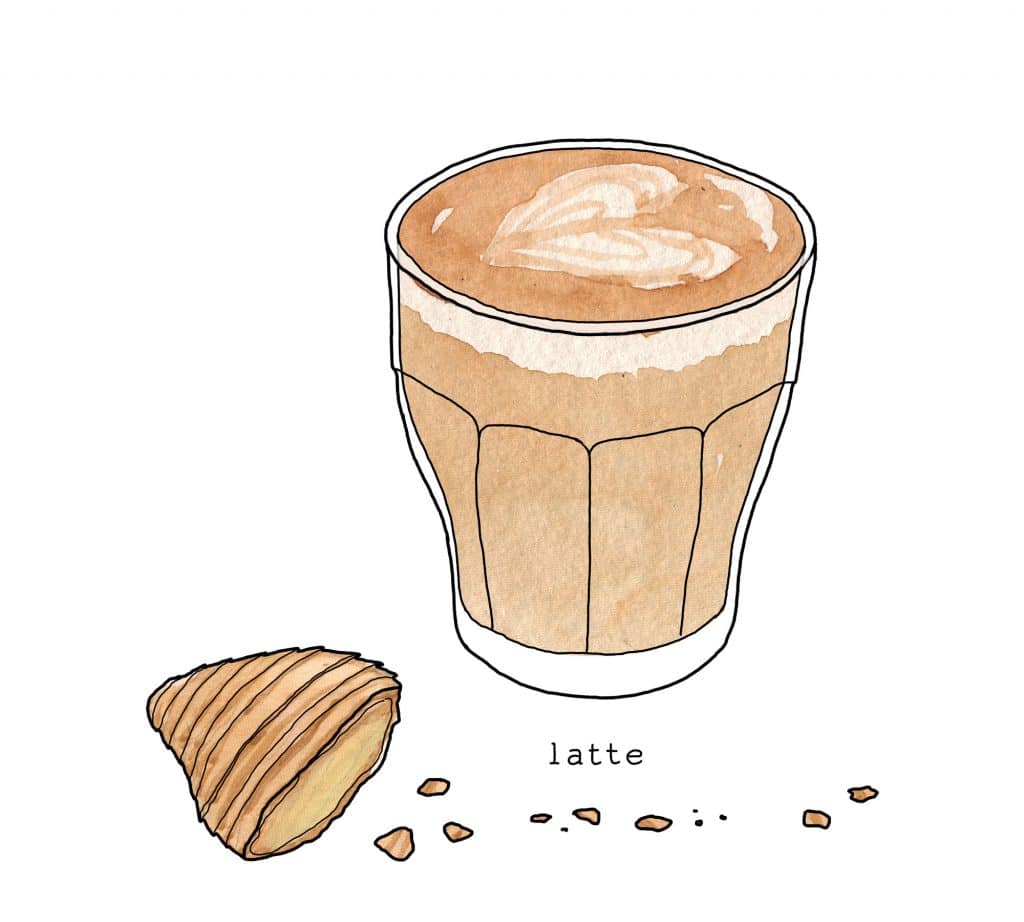
The term latte as a specific style of drink came about in the 1980s in the US, around the time coffee culture started to boom for the red, white, and blue. In European countries, latte means espresso with milk, but for Americans, a latte is an 8-12 ounce drink with a double espresso and steamed milk with a small layer of microfoam. It’s much weaker than all previously mentioned drinks due to the high milk-to-espresso ratio of about 1:5+. If you order a latte abroad, specify the ratio you want, but don’t be surprised if your request is met with a raised eyebrow.
The Recipe: Pull a double shot of espresso. Steam 8 ounces of milk between 140-150 °F, and combine. The microfoam layer should be about 1 centimeter thick.
Flat White
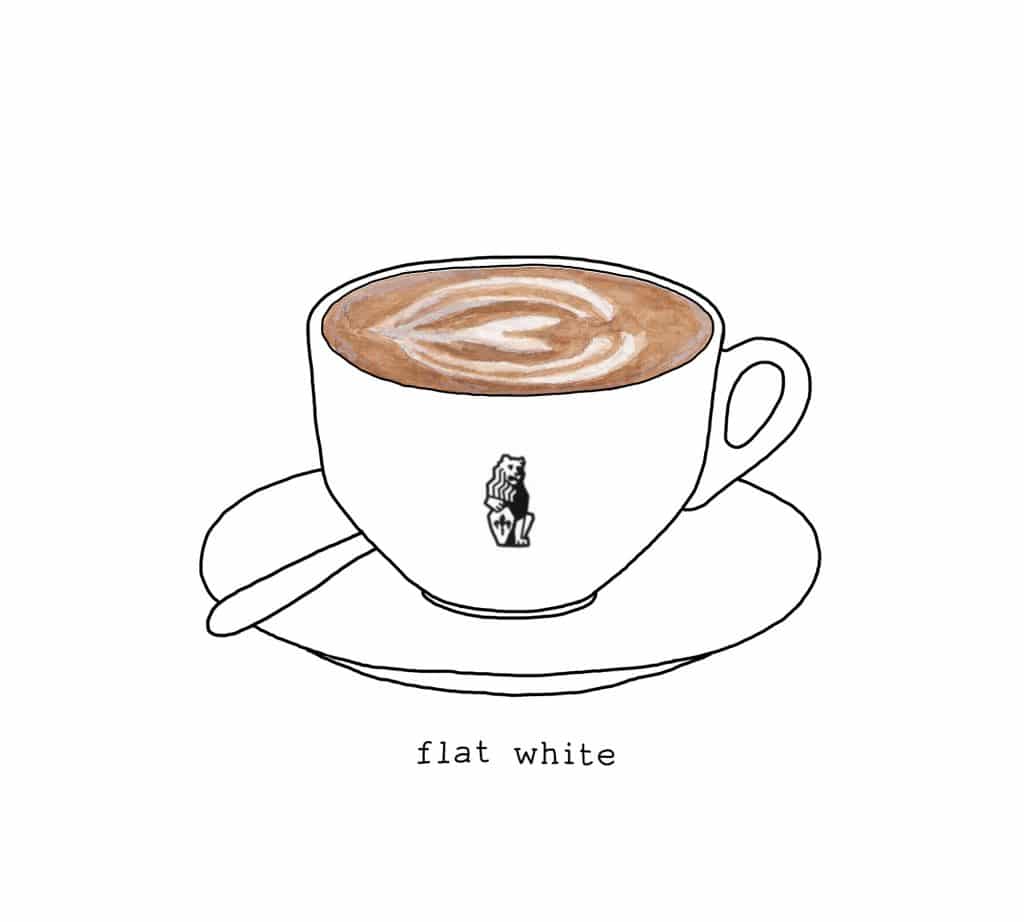
Native to Australia or New Zealand, new coffee concoctions don’t get birth certificates for easy genealogy—the flat white entered the coffee scene in the 1980s to further complicate your coffee shop’s menu. Baristas may describe it as a cross between a cappuccino and a latte, but here are the generally agreed-upon facts: the size and ratio are similar to that of a modern cappuccino, but is made similarly to a latte or modern cappuccino in that the espresso is thoroughly mixed with steamed milk. The layer of microfoam on the top of a flat white is as thin as possible, no more than ½ centimeter thick, whereas a latte has a microfoam layer of about 1 centimeter.
Basically, if you love a strong espresso-milk drink, want something with more ounces than a cortado, and the least amount of microfoam possible, then the flat white is for you. Or, as this Sprudge article explains, “The Flat White is a storied, semi-mythical beverage…a symbolic proxy through which we express our hopes, fears, and anxieties, and in its exchange, try to placate the ravenous calling for social distinction and connection. It gives people feelings.” Sounds yummy.
The Recipe: Pull a double shot of espresso. Steam about 4 ounces of milk between 140-150 °F, and combine. The microfoam layer should only be about ½ centimeter thick, so make sure to hold the base of the wand close to the bottom of the pitcher while steaming to keep excess air from adding volume to the milk.
Mocha
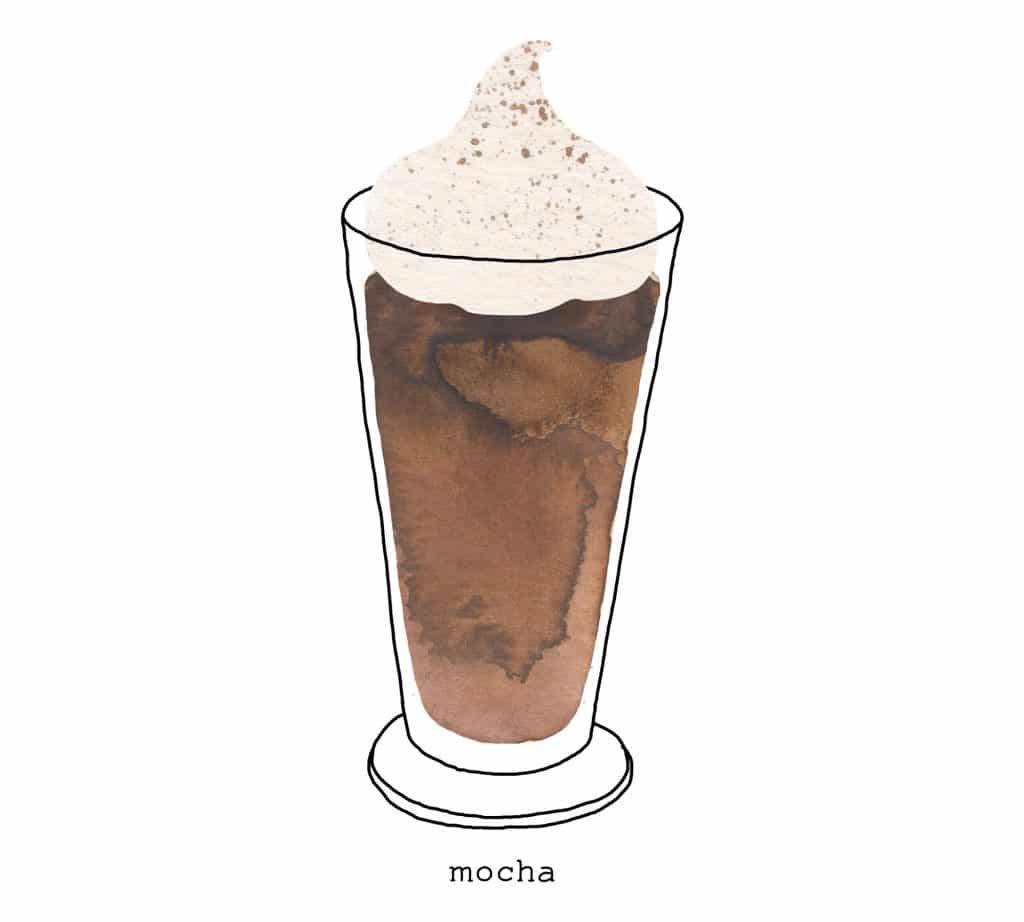
A bit of an outlier, the mocha is one of the few staple espresso beverages with an additional ingredient and no notable origin story (although the name “mocha” can be traced to the ancient seaport town of Yemen, called Mocha, which was a prominent coffee exporter). Mocha is the latte’s fraternal twin, with all similarities except for the addition of chocolate—either in the form of cocoa powder and sugar or chocolate syrup. Most variations of this drink will come down to the type of chocolate added, but you can typically expect a double shot of espresso, chocolate, and 6+ ounces of milk.
The Recipe: Pull a double shot of espresso. Steam 6-8 ounces of milk between 140-150 °F depending on your taste preferences. Add 2-4 tablespoons of your favorite chocolate sauce or powder to your espresso, then pour in the steamed milk to combine. Top it off with whipped cream and a sprinkle of cocoa powder.
Americano
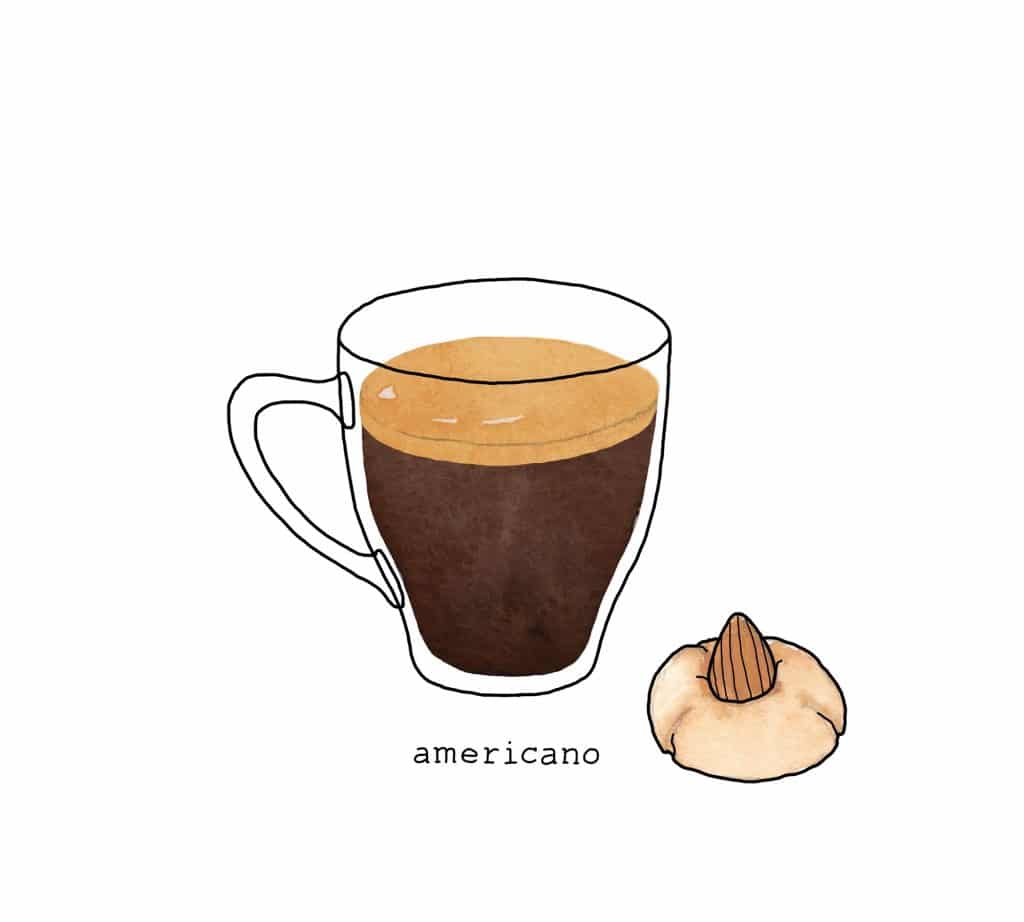
Named after—you guessed it—Americans, the americano is espresso that’s been diluted with hot water. Yes, Americans are known internationally for diluting their espresso, either with milk (the latte) or water (the americano). A standard americano, “American coffee,” will have a double shot of espresso and about 8 ounces of hot water. Still, it can be altered and made stronger by requesting an additional shot of espresso.
The Recipe: Pull a double shot of espresso and add 8 ounces of hot water.
Cafe Au Lait
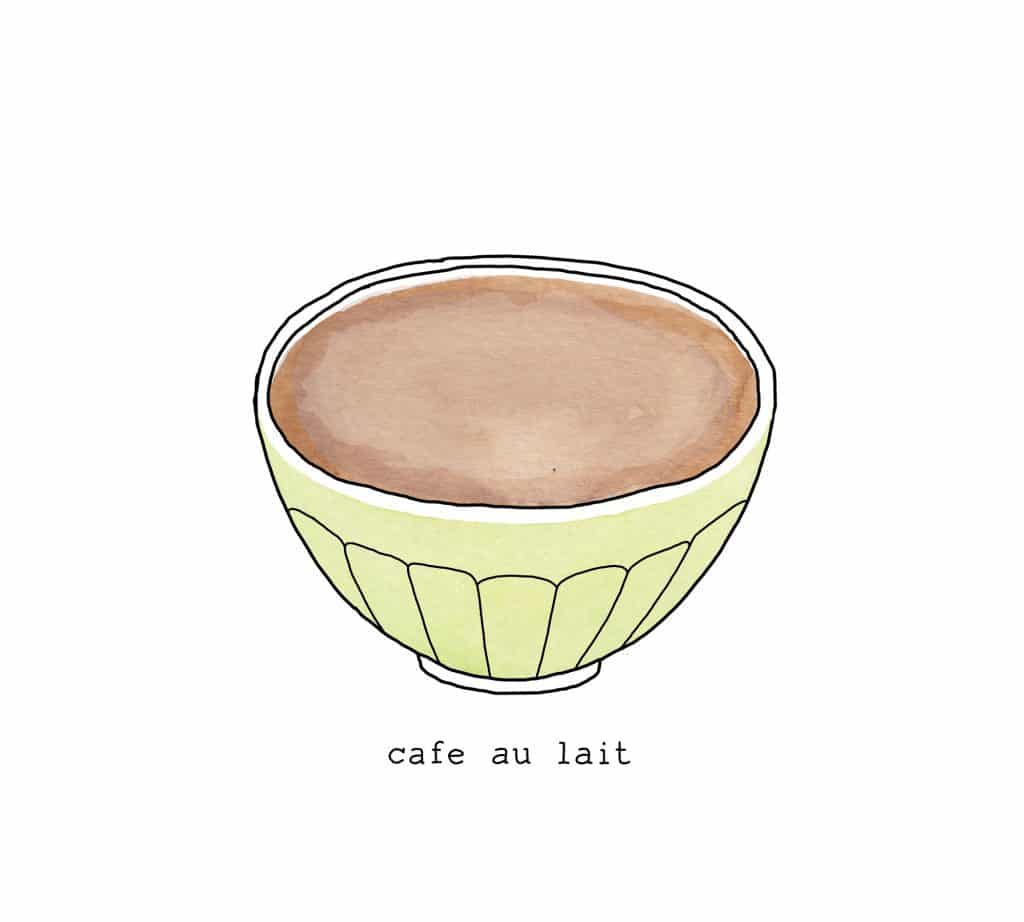
Translated from French, cafe au lait means “coffee with milk.” When ordered in the US, your barista will likely take brewed coffee and add hot milk (warmed with a steam wand without the intention of adding body or much air to the liquid).
Considering the nature of this list and that all drinks are based around espresso, the cafe au lait should not be included. But for the sake of clarity and general knowledge, many other countries, particularly in Europe, will use espresso, hot water, and hot or steamed milk to make this drink.
Some notes to consider:
As you’d see in a cortado or latte, steamed milk is milk that is heated through with a steam wand with minimal aeration. This is achieved by keeping the base of the steam tip submerged further below the level of the milk—just below the line where the tip meets the rest of the wand. . This creates much creamier milk that looks and acts much like wet paint.
If you’re looking for a more traditional cappuccino, aim for more aeration during the steaming process. This is achieved by submerging the end of the steam wand closer to the surface of the milk—the position of the steam tip will naturally draw in more air, increasing the amount of overall foam after you’ve stretched the milk. . Many times, you’ll see this referred to as a “dry” cappuccino, as the milk is much stiffer.
